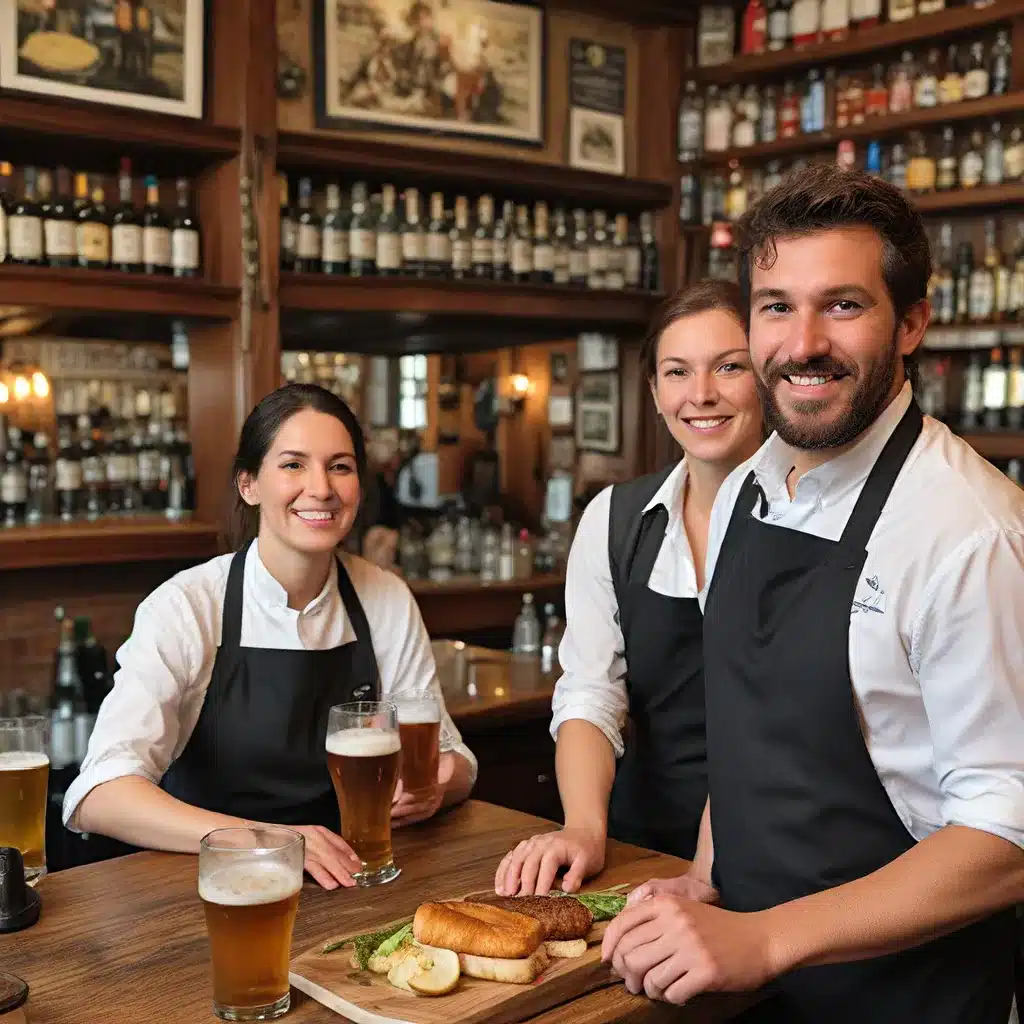
The Humble Beginnings of Shrimp and Grits
As I sit here, fork in hand, about to dive into a steaming mound of shrimp and grits, I can’t help but wonder about the rich history behind this quintessential Southern dish. Its origins, I soon realize, stretch far beyond the confines of the American South, weaving a tapestry of culture, hardship, and culinary innovation.
Let’s rewind the clock, shall we? According to The Local Palate, the roots of this iconic dish can be traced back to the Lowcountry of the Carolinas, where it was once known as “shrimps and hominy” or “breakfast shrimp.” But as food historian Michael Twitty boldly declares, the true origins of this dish lie much deeper, in the culinary traditions of Mozambique, Africa.
Twitty’s research reveals that the combination of corn and shellfish was a staple long before Charleston residents were enjoying it for their morning meal. This knowledge, he believes, was carried across the Atlantic by the enslaved Africans who were forcefully brought to the New World during the transatlantic slave trade. It’s a sobering reminder that the flavors we cherish today are often borne from a painful past.
The Melting Pot of Southern Cuisine
As the dish made its way into the plantation kitchens of the Lowcountry, it evolved and adapted, incorporating the influences of various cultures. The Portuguese, the Irish, and the Indigenous peoples all left their mark on the flavors and preparation methods of shrimp and grits.
It’s a testament to the rich tapestry of Southern cuisine, where the lines between cultures blur, and the most iconic dishes are often the result of a melting pot of influences. As chef Robert Stehling of Hominy Grill in Charleston so eloquently put it, “Most of the dishes we identify as Southern, iconic and classic, like shrimp and grits, are the result of mixed cultures and influences.”
The Rise of a Southern Icon
While shrimp and grits may have had humble beginnings as a simple, sustaining meal for laborers, it was destined for greater things. The dish’s journey to the culinary mainstream can be traced back to the 1980s and the visionary work of chef Bill Neal at Crooks Corner in Chapel Hill, North Carolina.
It was during a visit from renowned food editor Craig Claiborne that Neal had a revelation. Claiborne’s enthusiasm for the regional cuisine of the South inspired Neal to shift his focus from his French-influenced cooking to embracing the flavors and traditions of his own culinary heritage. It was then that the Crooks Corner shrimp and grits recipe, which had been on the menu for nearly four decades, became the blueprint for the dish’s meteoric rise.
As Stehling recounts, “Suddenly there it was, shrimp and grits at every important restaurant in town.” The dish had captured the hearts and palates of diners across the region, and chefs from Charleston to Nashville began putting their own spin on this Southern classic.
The Endless Permutations of Shrimp and Grits
Today, the variations on shrimp and grits are as diverse as the chefs who create them. At Biscuit Love in Nashville, you’ll find the “Bill Neal” – shrimp with cheese grits, fatback bacon, mushrooms, scallions, and Tabasco. In Seattle, Toulouse Petit serves up a version with fat, wild Pacific-caught head-on shrimp in a sauce spiked with black pepper, alongside housemade andouille sausage and crawfish.
Meanwhile, at Ida B’s Table in Baltimore, chef David Thomas uses Anson Mills grits as the foundation, then smothers the shrimp in a creole cream sauce and tops it all with pork belly croutons. And in Houston, Chris Shepherd of One Fifth and Georgia James might just put a red chile-braised Wagyu barbacoa over Hickory King grits.
The possibilities, it seems, are endless. But at the heart of it all, the simple, understated flavor of the grits remains the canvas upon which chefs can unleash their culinary creativity.
The Timeless Appeal of a Pub Staple
As I sit here at The Up & Under Pub, savoring every bite of this dish that has captured the imagination of so many, I can’t help but feel a sense of connection to the rich history that has brought it to this table.
This isn’t just a plate of food – it’s a story of resilience, adaptation, and the enduring power of culinary traditions to transcend borders and cultures. It’s a testament to the enduring appeal of the pub, where the comforting flavors of home can be found in the most unexpected of places.
So, as I dig into this steaming mound of shrimp and grits, I can’t help but wonder: what other delicious tales are waiting to be uncovered, hidden within the soul of the pub? The journey, it seems, has only just begun.

